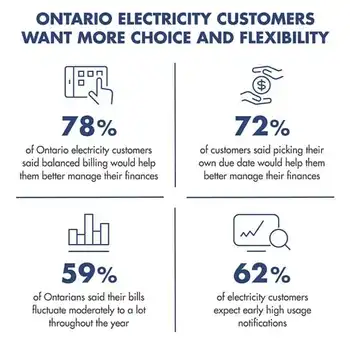Kyoto plan will survive election
OTTAWA, ONTARIO - Canada has a new plan to control greenhouse gas emissions and it would remain in place even if there is a change of government.
Three Liberal cabinet ministers unveiled the $10-billion plan April 13, although some environmentalists said it was short on details and some industry spokesmen said it was too costly.
But the government sees it as a compromise that will make the kind of cuts in greenhouse gas emissions needed to meet Canada's commitments to the Kyoto accord, while at the same time maintaining a competitive and robust Canadian economy.
In December 1997, Canada and more than 160 countries met in Kyoto, Japan and agreed to targets to reduce greenhouse gas emissions. It took until yesterday for the government to reveal its actual plan.
Conservative environment critic Bob Mills said if the Liberal minority government falls and the Tories win a spring election, his party is committed to keeping the plan, though perhaps with a different timeline.
"We can't get out of Kyoto," said Mills (Red Deer). "We would achieve those targets in a realistic fashion." The conservative parties of Canada opposed ratification of the accord before the federal government signed on in December 2002.
Meanwhile, Natural Resources Minister John Efford explained why the final plan is a compromise.
"I have a responsibility to grow the economy, not at the expense of the environment. And we have to sustain the environment, not at the expense of the economy," he said.
But that means a break for the 700 or so companies that produce nearly half of the country's greenhouse gases. Yesterday's plan calls on those companies — the so-called large final emitters — to do just 12 per cent of the job of reducing the country's greenhouse gas emissions.
While greenhouse gases form naturally, many human activities add such gases to the atmosphere, including the heating and cooling of buildings, using energy at home and work, driving vehicles and powering industry. Such gases block heat from the sun from escaping out of the atmosphere, which causes global warming.
Such warming or extreme climate change will affect fishing, farming, forestry, lakes, rivers, coastal communities and the north.
Giving large polluters a break, environmental critics say, leaves too much work for governments, communities and individuals. "(It puts) a whole lot of pressure on the rest of the plan," said Dale Marshall, a policy analyst for the David Suzuki Foundation. "It just puts a lot of pressure on individuals to do what needs to be done."
And some critics say Canadians aren't going to be able to make up the shortfall — and that means Canada won't meet its Kyoto targets.
"The average Canadian can turn lights off in their house or drive a smaller vehicle all they want," said Rick Smith of Environmental Defence. "But they're not going to be able to make up that gap that has been created by letting industry off the hook."
But Industry Minister David Emerson defended giving breaks to large emitters, saying they're essential to maintain a viable Canadian economy. "You can always reach your greenhouse gas target. All you have to do is drive the economy into the tank," he said. "But that's not what we're trying to do."
What's more, the $10-billion plan resets Canada's target to cutting 270 megatonnes of greenhouse gas emissions a year over the period 2008-2012, up from 240 megatonnes.
Groups representing the country's largest polluting companies yesterday had measured praise for the plan, which now asks them to cut just 36 megatonnes of greenhouse gas emissions a year. A plan announced in 2002 asked them for a 55-megatonne cut.
"In 2002, there was not really a message of Canada and Canadians meeting this challenge. It was really an industry approach," said Richard Paton, of the Canadian Chemical Producers' Association. "This time, they've responded to some of the industry issues."
The new plan gives heavy emitting companies that don't immediately cut their emissions the option to pay into a technology investment fund that may yield lower emissions down the road, rather than only having the option of buying emissions credits from overseas. Putting money into the fund gives those companies the promise of a return on their investment one day.
"There's a much, much better emphasis on technology as we move forward... with what needs to be done to reduce carbon dioxide emissions," said Barry Lacombe, president of the Canadian Steel Producers Association.
The Canadian Chamber of Commerce attacked the plan as too costly, and said it will harm business.
Companies will receive a credit for every dollar they spend over $15 per tonne to reduce greenhouse gas emissions, explained Andrew Taylor, an energy lawyer from Ogilvy Renault LLP.
"Ultimately this adds to the bottom line cost of other companies," said Taylor. Even with the credit, he argued the "new cost of doing business is an additional $15 per tonne."The plan's centrepiece is a $1-billion Climate Fund. It would be used to fund emissions-cutting projects proposed by communities, companies and individuals. The plan also includes a $250-million partnership fund intended to spur provinces and municipalities to play a larger role in the fight to reduce emissions, a move both industry and some environmental groups praised.
"They control building codes. They have a lot of the regulation ability that the federal government doesn't have," said Elizabeth May, executive director of the Sierra Club of Canada.
The home-retrofit program known as EnerGuide would be expanded.
The Ontario government praised the plan. "Funding is a part of this plan and we are delighted that it is," said Environment Minister Leona Dombrowsky. "It's going to very helpful in enabling us to meet our commitment to replace coal (fired power plants)."
But in Ottawa, the opposition had criticisms. "Obviously the $10 billion is going to come from the taxpayer," Mills said. "This is just a short-term fix, really just to try and cover up what they haven't done."
Still, Mills said a Conservative government would remain true to Canada's Kyoto commitment to cut greenhouse gas emissions by 6 per cent of 1990 levels over the years 2008-2012.
NDP Leader Jack Layton said the new plan is based on a "hope and a wish."
Related News

Seattle City Light's Initiative Helps Over 93,000 Customers Reduce Electricity Bills
SEATTLE - In a noteworthy achievement for both residents and the environment, Seattle City Light has successfully helped more than 93,000 customers reduce their electricity bills through various energy efficiency programs. This initiative not only alleviates financial burdens for many households but also aligns with the city’s commitment to sustainability and responsible energy use.
The Drive for Energy Efficiency
Seattle City Light, the city’s publicly owned electric utility, has been at the forefront of promoting energy efficiency among its customers. Recognizing that energy costs can be a significant strain on household budgets, the utility has developed a range of programs…




